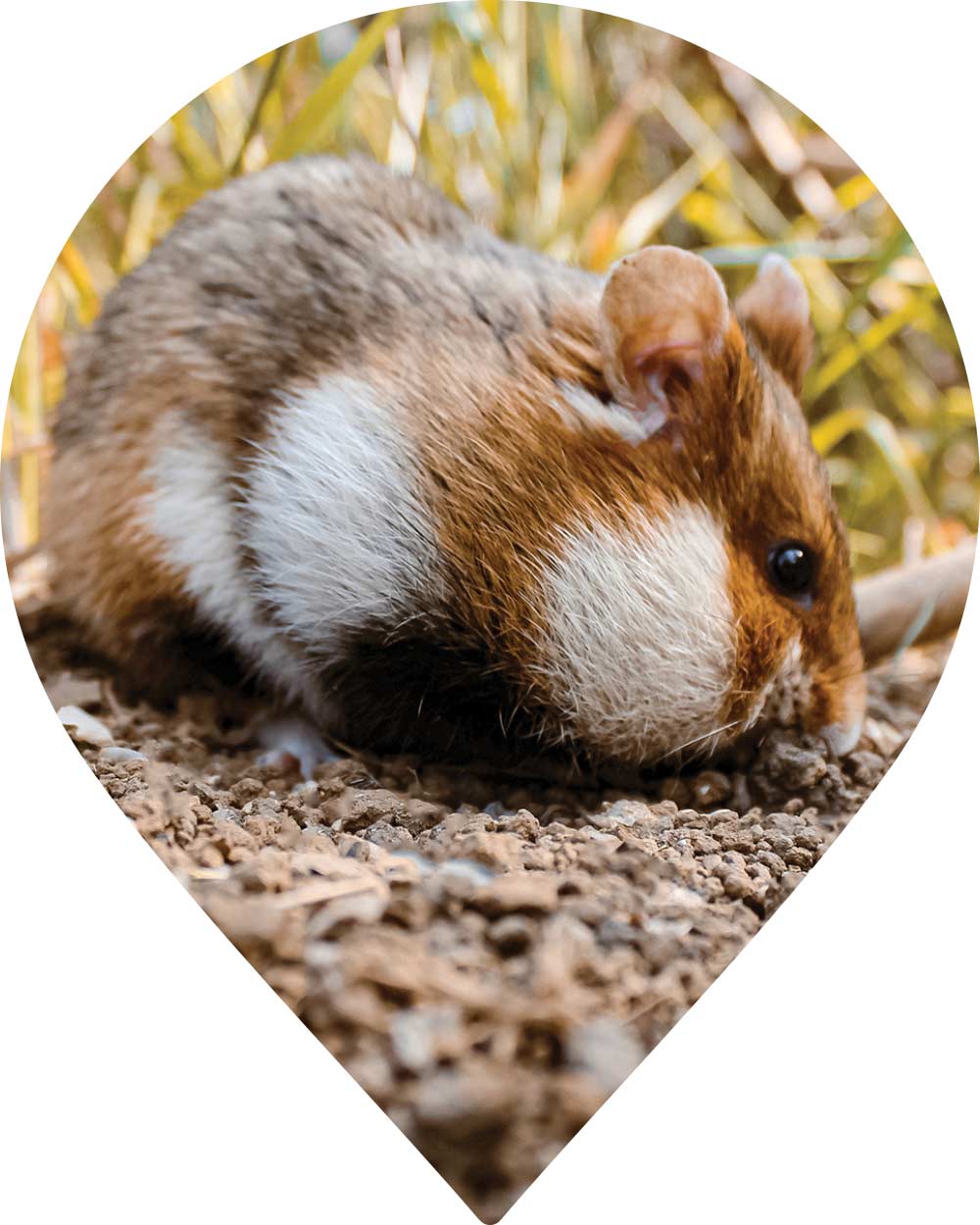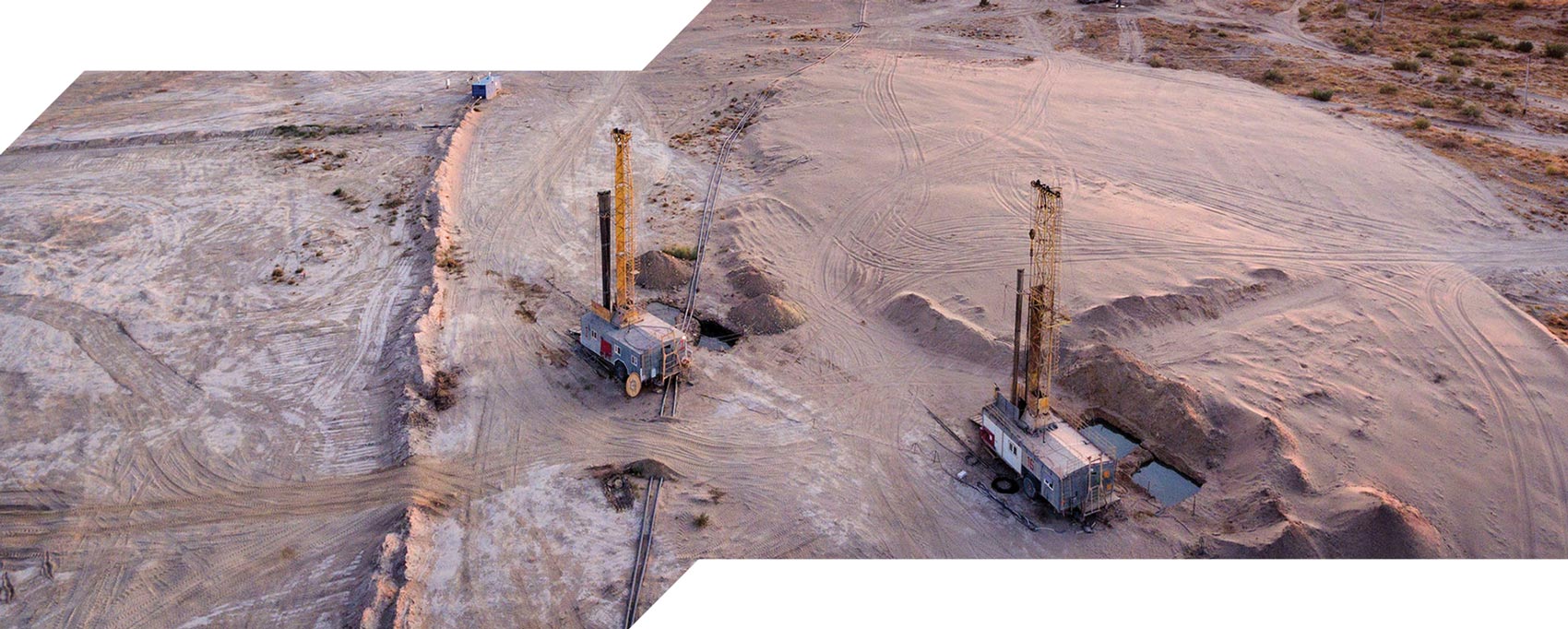Biodiversity conservation
Humankind is on the brink of a major ecological crisis — the Sixth Extinction of Species — caused by human activity. Conserving and maintaining biodiversity is an essential component of the health and resilience of our planet’s ecosystems.
The Kunming-Montreal Biodiversity Framework Programme, signed at the Conference of the Parties to the UN Convention on Biological Diversity (COP 15), has become the main program for biodiversity conservation.

Hamster
(cricetus cricetus)
on the verge of total extinction
Potential impact on areas of operation by type of activity GRI 304-1 GRI 304-2
Our portfolio companies are present in all regions of the Republic of Kazakhstan, especially companies with extensive linear infrastructure. This infrastructure covers diverse regions of Kazakhstan and affects different types of ecosystems, including forest-steppe, wetlands, steppe, semi-desert and desert ecosystems, which are found in various terrains, from shallow hills to hilly and flat terrain.
The main aspects of the negative impacts of portfolio companies with significant linear infrastructure on biodiversity are as follows:
- obstruction of railway tracks, artificial fences, embankments, high-speed motorways to the migration routes of ungulate mammals;
- deaths of animals on railway tracks and highways. GRI 3-3
Electricity production and distribution
The main electricity production facilities are located in Pavlodar and Almaty regions, regions with a high level of industrial development and, consequently, subject to a high level of technogenic environmental pollution. The production facilities are located on industrial land where there are no red-listed, endangered or other species of animals and birds. The impact of the production activities of the Fund’s enterprises on the environment is minimal and is constantly monitored.
Oil and gas production
Some oil and gas fields are located in the Caspian Sea and represent a particular group of risks for biodiversity.
The Northern Caspian is the most productive part of the Caspian Sea. The biological resources of this region have a significant scale. Among the most significant commercial objects of the ichthyofauna are 25 species, including sturgeons, which account for more than 70-80% of their world stock in this basin.
The eastern part of the water area of the Northern Caspian Sea, including the deltas of the Volga (within the Republic of Kazakhstan) and Ural rivers, is located in the state-protected area in the northern part of the Caspian Sea. The wetlands of the northern part of the Caspian Sea, especially the deltas of the Volga, Ural, and Emba rivers, as well as the coastal zones and the seawater area, are key areas on the continent, providing refuge for millions of waterfowl and waterbirds during nesting, molting, migration and wintering periods. One of the largest flyways in Eurasia, the Siberian-Black Sea-Mediterranean Flyway, passes through the Northern Caspian.
JSC NC KazMunayGas performed works on compensation of damage to fish resources during construction and abandonment of well V-1 at the Zhenis site by releasing fish planting material (sterlet) into the Ural River (Atyrau region) in July 2023. GRI 3-3
Mining and Metallurgical Sector
Sources of direct mechanical impact on the vegetation cover are construction and installation, drilling and excavation works that disturb the integrity of soil horizons and natural dominant vegetation cover. The main type of impact is mechanical disturbance of the soil and vegetation cover within the mining allotment area, resulting in disturbance of animals, whereby reptiles, birds and mammals may be displaced for some distance during construction works, and fragmentary changes on animals' natural habitats occur.

JSC NAC Kazatomprom in 2023 carried out monitoring studies the state of biodiversity in the area where uranium mines are located, determining the composition of flora and fauna, taking into account rare and red-listed species. GRI 3-3